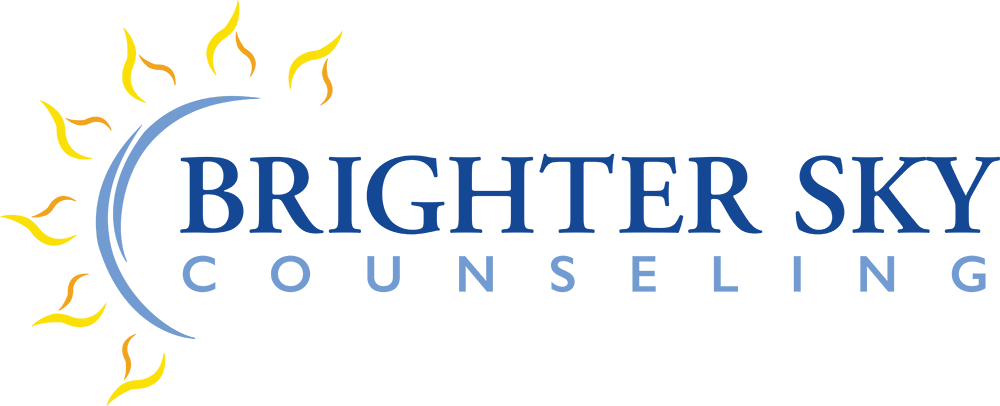Unlocking the Power of Creativity for Mental Health: A Path to Healing and Growth
Erin Bratsky, MSW, LCPC
October 2024
Creativity is often seen as a form of self-expression, but it’s also a powerful tool for mental well-being. From reducing stress and anxiety to promoting personal growth, creative activities provide an outlet for emotions and help individuals process complex experiences in a healthy way. At Brighter Sky Counseling, we believe that everyone—whether you’re a seasoned artist or someone just starting to explore their creative side—can benefit from incorporating creativity into their daily lives to boost mental health and overall wellness.
The Science Behind Creativity and Mental Wellness
Engaging in creative activities triggers the release of dopamine, a brain chemical that plays a role in pleasure, motivation, and mood regulation. This means that when you immerse yourself in art, music, dance, or writing, you’re not only expressing yourself but also naturally boosting your mood and managing stress. Studies have shown that creative practices can even improve cognitive function, increase resilience, and enhance problem-solving abilities.
What makes creativity such a unique avenue for healing is its ability to bypass the usual verbal filters we use in daily communication. Creative expression allows us to explore thoughts and emotions that are difficult to articulate, providing a safe space to work through pain, grief, anxiety, or trauma. Whether it’s splashing colors on a canvas or journaling your thoughts, creativity helps externalize your internal world in a way that feels authentic and freeing.
The Benefits of Creative Expression on Mental Health
- Stress Reduction and Emotional Release: Creating something with your hands or using your voice, body, or instruments can channel overwhelming emotions into tangible forms. This process not only reduces stress but also fosters a sense of emotional release and relief, making it easier to manage difficult feelings.
- Enhanced Self-Awareness and Insight: Engaging in creative activities helps individuals reflect on their inner experiences and gain new insights into their emotions and behaviors. By exploring these aspects of yourself through art, music, or storytelling, you can cultivate a deeper understanding of who you are and what you need to feel balanced and fulfilled.
- Improved Focus and Mindfulness: When you’re fully engaged in a creative task, your brain enters a flow state—an experience of being completely absorbed and focused in the present moment. This flow state is associated with mindfulness, reduced rumination, and decreased anxiety, making it an effective way to practice mental clarity and calmness.
- Increased Confidence and Self-Esteem: Completing a creative project, no matter how small, can provide a tremendous boost to self-esteem. This sense of accomplishment encourages a positive self-image and enhances confidence, helping individuals feel more capable of facing life’s challenges.
- Building Social Connections and Community: Participating in group creative activities or sharing your work with others can strengthen social bonds and combat feelings of loneliness and isolation. Connecting through shared creative experiences fosters a sense of belonging and support, which are crucial for maintaining good mental health.
Simple Ways to Incorporate Creativity into Your Daily Routine
You don’t need to be an artist to benefit from creative activities. Here are a few simple ways to include more creativity in your daily life:
- Start a Sketchbook or Art Journal: Doodle, draw, or collage your thoughts and feelings as a way to visually express your inner world.
- Create a Daily Playlist: Curate music that reflects your mood or evokes a sense of calm and relaxation. Consider picking up an instrument or singing along as a form of musical expression.
- Explore Creative Writing or Storytelling: Write short stories, poems, or simply jot down your thoughts in a journal. Allow yourself to play with language and narratives as a way to articulate emotions or escape into your imagination.
- Try Movement-Based Activities: Activities like dancing, yoga, or even taking a mindful walk can help release pent-up energy and emotions while promoting relaxation and clarity.
- Engage in Cooking or Baking: Use cooking as a creative outlet by experimenting with new recipes or presenting food in an artistic way. This not only nourishes your body but also stimulates your mind.
Why Creativity Matters: A Holistic Approach to Mental Health
Creativity is more than just a way to pass the time; it’s a pathway to healing, self-discovery, and emotional well-being. At Brighter Sky Counseling, we encourage clients to explore their creative potential, whether through individual art therapy sessions or community-based creative workshops or art therapy groups. We’ve seen firsthand how these practices can help people better understand themselves, reduce stress, and develop coping mechanisms that last a lifetime.
If you or a loved one is struggling with mental health challenges, consider integrating creative activities into your routine as a supportive tool for managing emotions and fostering resilience. From painting to writing to music, creativity offers countless ways to unlock inner strength and promote a healthier, happier mind.
For more information on how creativity can support mental health or to learn about our therapeutic programs that incorporate art and self-expression, reach out to Brighter Sky Counseling today. Let’s work together to explore new avenues for healing and personal growth through the transformative power of creativity.
